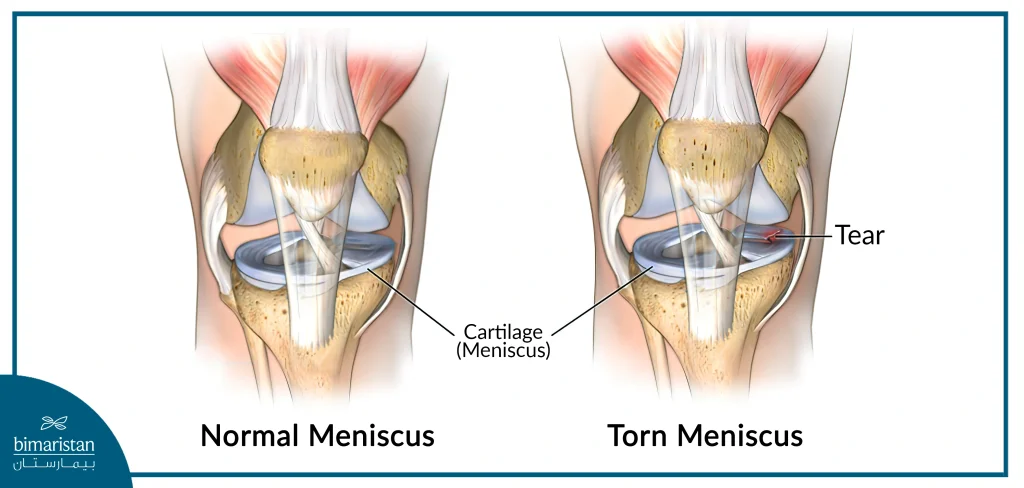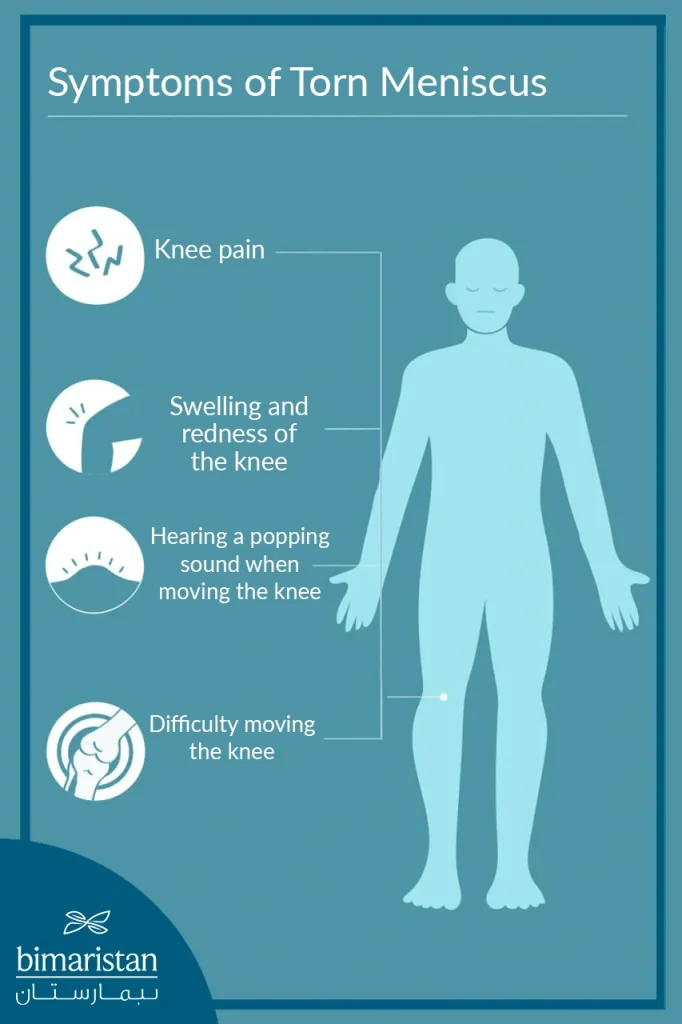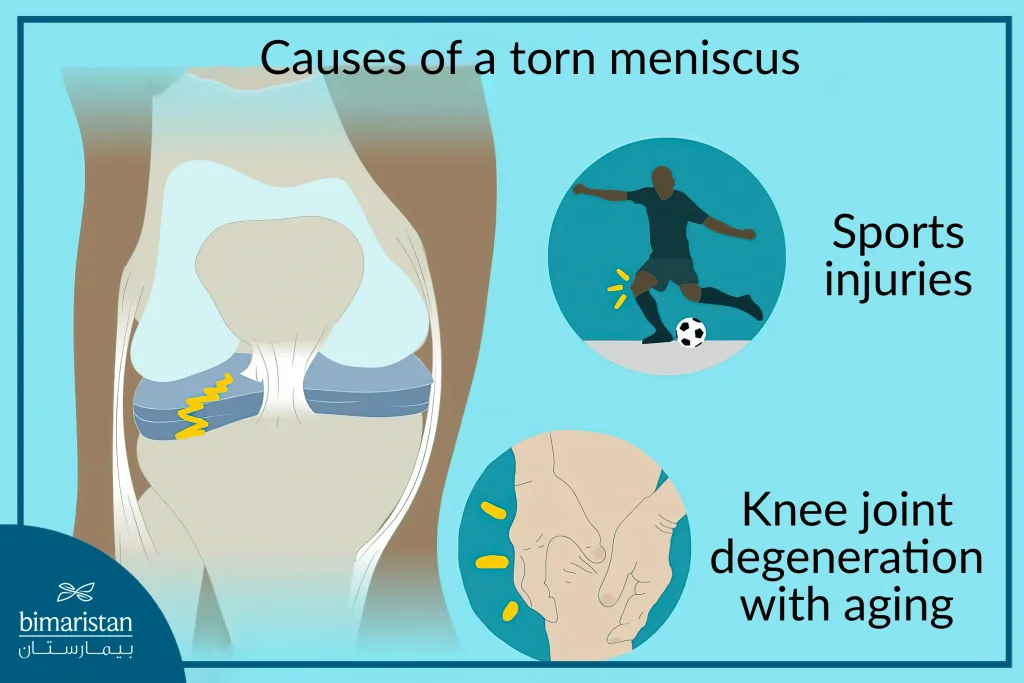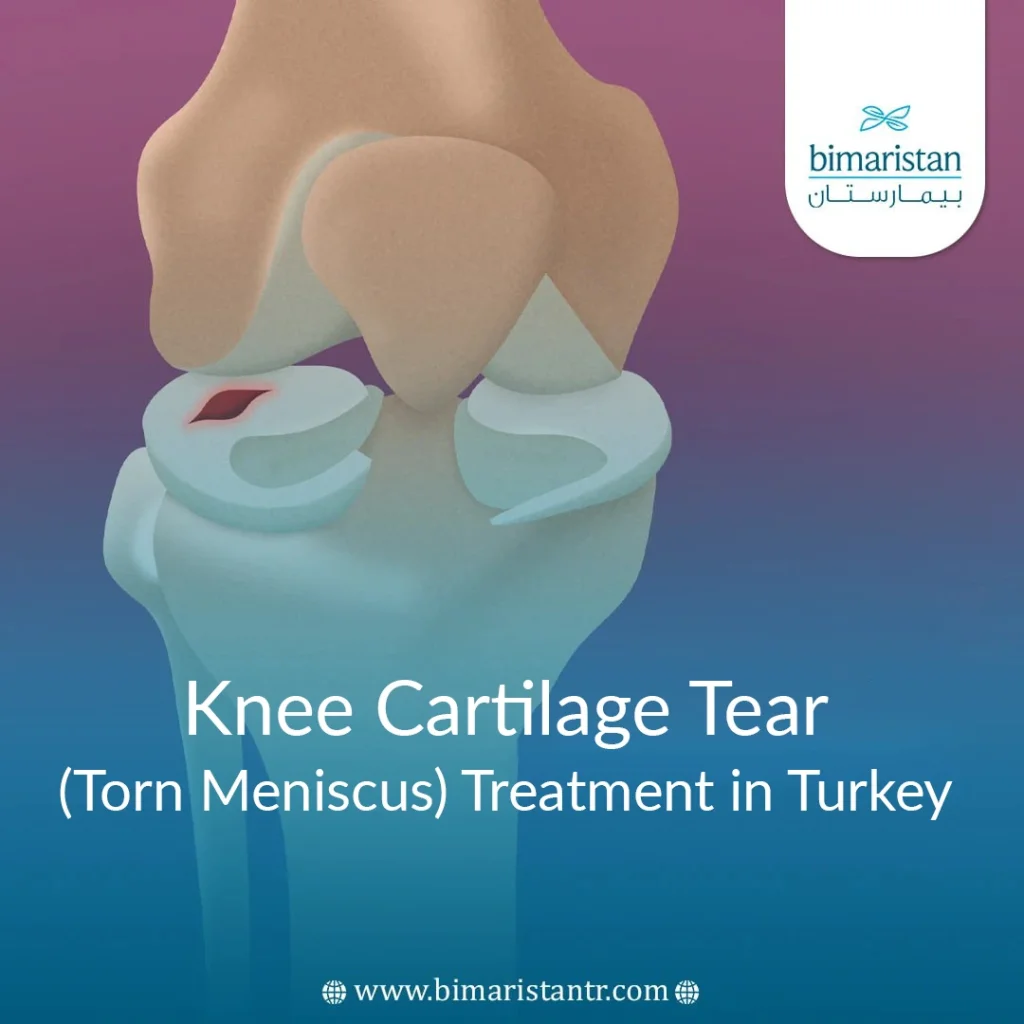A knee cartilage tear is one of the most common injuries among athletes. When the knee’s cartilage is torn, several symptoms occur. How does this tear occur, and what is the treatment?
The treatment for a Torn meniscus depends on the severity of the cartilage injury. It could be very simple, or surgical intervention may be necessary in severe cases.
Each of your knees has two pieces of crescent-shaped cartilage called menisci, which act as a cushion to facilitate movement between the thigh and shin bones and protect your knee from the pressure of body weight.
What is a knee cartilage tear?
A knee meniscus tear, also known as a torn meniscus, results from improper movement that leads to the tearing of the cartilage, such as a sudden change in movement direction that causes a twist in the knee. Meniscus tears are most commonly seen in football players and athletes in general.
For older individuals, degenerative joint diseases affecting the knee joint may increase the risk of meniscus tears without exposure to severe traumatic incidents.
When the knee’s meniscus cartilage tears, you may experience pain and notice redness and swelling in your knee. These symptoms may not be immediate and may only appear after 24 hours of the injury.

Symptoms of Knee cartilage Tear
The symptoms of a knee meniscus tear vary from person to person depending on the severity of the injury and the degree of the tear. In mild cases of tearing, symptoms may not be noticeable until a day or two after the injury.
Some of the warning signs of a knee meniscus tear include:
- Increased pain when attempting to rotate the knee
- Swelling and redness
- Difficulty moving the joint (straightening or bending)
- Hearing a popping sound from the bones
- Limping during movement
- Stiffness in the joint

Causes of knee cartilage tears
As mentioned earlier, sports injuries are the most common causes of knee meniscus tears, and some risk factors increase the likelihood of tearing:
- Aging (over 60 years old)
- Arthritis or osteoarthritis
- Previous anterior cruciate ligament tear
- Males are more prone to tears than females
- Lifting heavy weights
- Football players

Grades of knee cartilage tear
Knee cartilage tears are classified into several grades depending on the severity of the cartilage tear. The grade of the meniscus tear helps determine the most appropriate treatment for the patient and when surgical intervention is needed. The grades are as follows:
Grade 1 knee cartilage tear
This is a mild stage of cartilage injury and often heals spontaneously with rest after a week or two, without the need for surgery. The cartilage at this grade becomes soft, and swelling and pain may be noticed.
Foods rich in vitamin D can accelerate healing, in addition to the important role of physical therapy and rehabilitation in cartilage tear recovery.
Grade 2 knee cartilage tear
The tear here is of moderate severity, and there may be cracks in the cartilage not exceeding 1.5 cm in length, and the tear does not reach below the cartilage bone.
Treatment may involve prescribing anti-inflammatory and pain-relieving medications along with advising the patient to rest the knee. Special exercises in physical therapy can also help accelerate recovery.
Grade 3 Knee Meniscus Tear
The tear here is of considerable severity and requires special attention. The tear extends beyond 1.5 cm in the cartilage and may reach the bone beneath the cartilage.
In most cases, this grade requires surgical intervention to repair the knee meniscus tear.
Diagnosing a torn meniscus
Doctors often diagnose knee meniscus tears through clinical examination and observing signs and symptoms of the injury. They may ask about any previous injury history in addition to a few other questions about the medical history.
An orthopedic doctor may request one of the following tests:
X-rays
X-rays are used to rule out other injuries such as fractures in the knee causing pain. X-rays show the knee joint bones, but the meniscus cartilage does not appear on X-ray images.
Magnetic Resonance Imaging (MRI)
MRI is the most effective method for detecting knee meniscus tears. It utilizes a strong magnetic field to visualize soft and hard tissue in the knee joint, allowing the visualization of the meniscus cartilage.
Non-Surgical treatment for knee cartilage tear
The choice of the appropriate treatment method depends on the location, severity, and underlying causes of the tear. Surgery is not always necessary, as mild tears in the cartilage may heal spontaneously without the need for any therapeutic interventions.
However, in cases of advanced knee meniscus tears that cannot heal spontaneously, surgical intervention is often necessary, usually performed using knee arthroscopy.
Some of the best non-surgical treatments for managing knee meniscus tear include:
Resting the Injured Cartilage
Resting and avoiding joint movement help alleviate knee pain and accelerate the healing of the meniscus tear. Using crutches also helps in cases of significant pain during walking.
Medication for knee cartilage tear
The primary role of medications is to relieve the pain associated with cartilage tears. Nonsteroidal anti-inflammatory drugs (NSAIDs) such as ibuprofen or aspirin reduce knee swelling and pain following the injury.
Applying Ice to the Pain Area
Applying ice to the knee reduces redness and swelling associated with meniscus tear. Use a cold pack containing ice or frozen vegetables and apply it to the injured area for about 20 minutes. Repeat this process several times a day.
Physical Therapy for the Knee
Physical therapy aims to strengthen the muscles to increase knee stability and strength. Physical therapy is performed in various ways under the supervision of specialists. You can read more about physical therapy.
Knee Cartilage Tear Surgery
When the meniscus tear is unresponsive to other treatments, shows no signs of healing, and the pain does not decrease over time, surgical intervention becomes necessary.
Knee cartilage surgery is an effective way to repair meniscus tears, especially in children and young adults. When repair is not possible, the torn cartilage can be removed using knee arthroscopy.
In advanced cases of knee joint cartilage tear accompanied by knee joint degeneration, surgery becomes more complex, and knee joint replacement surgery may be recommended.
Knee Meniscus Cartilage Surgery is divided into:
Arthroscopic Knee Cartilage Tear Repair
These are minimally invasive procedures with low penetration risk to treat meniscus cartilage injuries. It involves a small tubular scope equipped with a camera and light, inserted into the knee joint through a small surgical incision.
Using knee arthroscopy connected to a video screen, the orthopedic surgeon can see the knee joint from the inside and repair or remove the meniscus cartilage depending on the severity of the condition.
After completing the treatment of the tears in the joint cartilage, surgical stitches are used to keep the cartilage stable in place until the tear heals and recovers. Healing tends to be faster in younger individuals compared to older ones.
Knee Joint Replacement Surgery
This procedure is reserved for complex cases of severe cartilage tear with degeneration. It is often performed in adults with degenerative knee joint inflammation.
The surgeon replaces the damaged knee joint with either a complete or partial knee joint replacement, then places an alternative artificial joint in the replacement area. You can learn more about knee joint replacement surgery.
In conclusion, knee cartilage tear is a common injury that occurs during certain sports activities, with different grades that can heal without treatment in mild stages. However, advanced grades of injury may require surgery. Strengthening the supporting muscles of the knees through exercises can help prevent this tear, and remember that consulting a doctor when experiencing knee pain is important for early treatment before the condition worsens.
References:
- KNEE: Meniscus Tears • Cartilage Damage, Orthopedic Surgery & Sports Medicine.
- Meniscal tear, King’s College Hospital.


